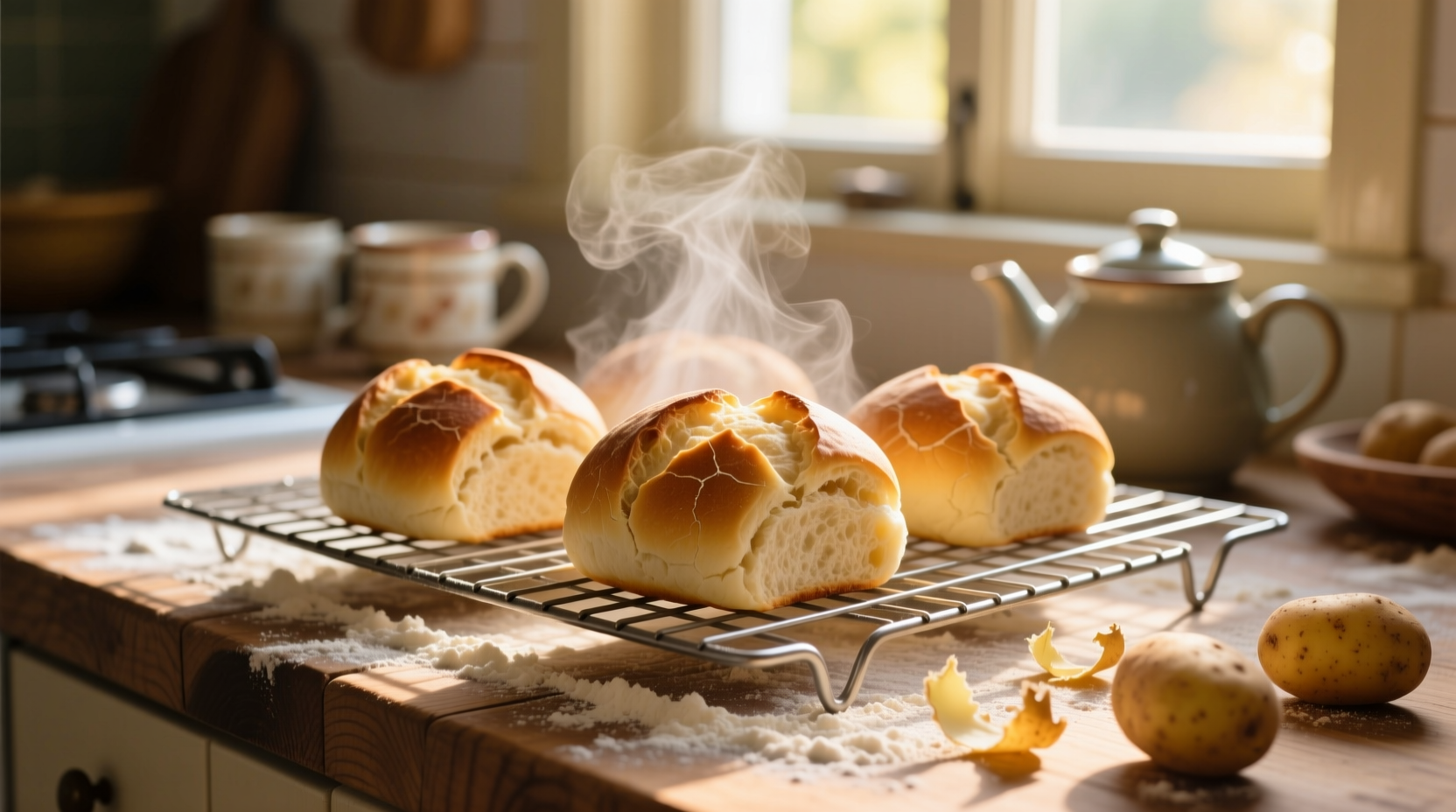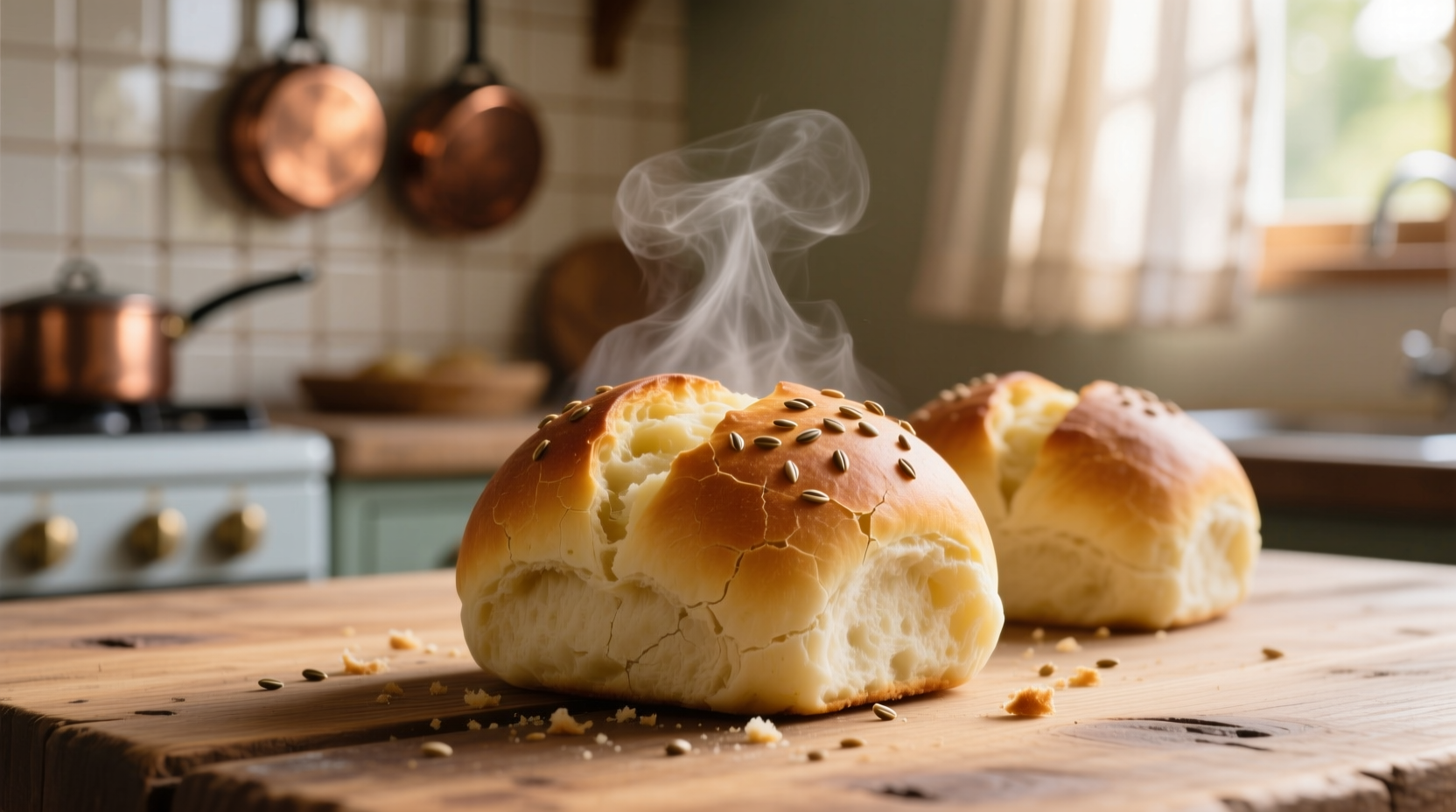Home bakers and professional chefs increasingly choose potato buns for their remarkable texture and versatility. Unlike standard dinner rolls, these enriched breads incorporate mashed or dehydrated potatoes into the dough, creating a distinctive lightness that stays soft for days without artificial preservatives. The potato's natural sugars promote beautiful browning while the starches interfere with gluten development, resulting in that signature melt-in-your-mouth quality that keeps customers coming back to diners and burger joints worldwide.
What Exactly Are Potato Buns?
Potato buns represent a clever baking innovation where potato replaces some of the liquid and flour in traditional bread recipes. This isn't just a regional specialty—it's a global phenomenon with variations from Japanese milk bread to American hamburger buns. The magic happens through potato's unique composition: its starches absorb more water than wheat flour and release it slowly during baking and storage. This scientific principle, documented by food researchers at Cornell University's Department of Food Science, explains why potato-based breads maintain superior moisture retention compared to standard formulations.
The Science Behind Superior Texture
Understanding why potato transforms ordinary dough requires examining the starch chemistry. When potato starch gelatinizes during baking (around 140°F/60°C), it creates a moisture-retaining network that delays staling. This process, known as retrogradation inhibition, significantly extends the freshness window. Professional bakers at the Bread Bakers Guild of America confirm that properly formulated potato buns maintain optimal texture for 3-5 days—nearly double the shelf life of conventional rolls.
| Characteristic | Potato Buns | Regular Wheat Buns |
|---|---|---|
| Moisture Retention | Excellent (72+ hours) | Moderate (24-48 hours) |
| Crumb Structure | Light, airy, tender | Denser, chewier |
| Browning | Rich golden color | Lighter golden brown |
| Shelf Life | 3-5 days at room temperature | 1-2 days at room temperature |
Global Variations of Potato Buns
While American-style potato hamburger buns dominate fast food menus, potato-enriched breads appear worldwide with fascinating regional adaptations:
- Japan: Milk bread (shokupan) often incorporates potato flour for extraordinary softness
- Ireland: Traditional potato bread uses mashed potatoes in soda bread variations
- Poland: Kartacze features potato dough包裹肉馅
- United States: Northeastern "potato rolls" from brands like Martin's
The evolution timeline reveals how potato buns emerged from necessity. During the Irish Potato Famine (1845-1852), resourceful bakers incorporated available potatoes into bread dough to stretch limited flour supplies. This practical adaptation eventually evolved into the beloved specialty we know today, with commercial production taking off in the 1940s when American bakeries discovered potato's preservative qualities reduced waste.
Perfecting Your Potato Bun Recipe
Creating exceptional potato buns requires attention to three critical elements:
- Potato preparation: Use russet potatoes for optimal starch content. Boil until tender, then rice (don't mash) for smooth incorporation
- Hydration balance: Potato adds moisture—reduce liquid by 25% compared to standard bun recipes
- Dough temperature: Maintain 78°F (25°C) during bulk fermentation for ideal yeast activity
Professional bakers recommend using 20-25% potato by weight of flour. Exceeding this ratio creates gummy texture, while too little won't deliver the signature softness. For home bakers, substituting 1/4 cup mashed potato for every cup of flour provides reliable results.

Best Culinary Applications
Potato buns shine in specific applications while underperforming in others. Understanding these context boundaries ensures optimal results:
Ideal for: Juicy burgers (their structure withstands moisture without disintegrating), pulled pork sandwiches, breakfast sandwiches with egg and bacon, and delicate seafood rolls where a light crumb complements rather than overwhelms.
Less suitable for: Oversized sandwiches with excessive fillings (their tender structure may collapse), applications requiring crusty exteriors, or when a substantial chew is desired (like artisanal deli sandwiches).
Food service professionals note that potato buns pair exceptionally well with umami-rich ingredients. The subtle sweetness balances savory flavors in dishes like mushroom Swiss burgers or Korean bulgogi sandwiches. For breakfast applications, their neutral profile complements both sweet and savory fillings without competing for attention.
Troubleshooting Common Issues
Even experienced bakers encounter challenges with potato buns. Here's how to solve frequent problems:
- Gummy texture: Caused by excess potato or underbaking. Solution: Reduce potato content and ensure internal temperature reaches 190°F (88°C)
- Flat buns: Often from over-hydration. Solution: Decrease liquid by 10-15% when adding potato
- Dry crumb: Results from insufficient potato or overbaking. Solution: Increase potato content slightly and check doneness 5 minutes early
- Poor browning: Caused by inadequate sugar content. Solution: Add 1-2 tsp sugar to dough formulation
Remember that potato buns require gentler handling than standard breads. Their delicate structure means minimal shaping pressure and careful transfer to baking sheets. Professional bakers recommend using parchment paper rather than greasing pans to prevent spreading.
Storage and Revival Techniques
Maximize your potato buns' shelf life with these professional storage methods:
- Cool completely on wire racks before storing to prevent condensation
- Store in airtight containers at room temperature for 3-5 days
- Freeze for up to 3 months—wrap individually in plastic then place in freezer bags
- Revive stale buns by sprinkling with water and reheating at 350°F (175°C) for 5-7 minutes
Unlike regular breads that become unpleasantly tough when stale, potato buns typically regain acceptable texture with proper revival techniques—a significant advantage noted in consumer satisfaction surveys conducted by the American Institute of Baking.
Can I use instant potato flakes instead of fresh potatoes?
Yes, instant potato flakes work well as a convenient alternative. Use 1/3 cup flakes per cup of flour and reconstitute with equal parts warm water. Many professional bakeries actually prefer flakes for consistent results and longer shelf stability in the dry ingredient phase.
Why do my potato buns collapse after baking?
Collapse typically occurs from excess moisture or underbaking. Potato adds significant hydration, so reduce other liquids by 20-25%. Ensure your oven temperature is accurate and bake until internal temperature reaches 190°F (88°C). Opening the oven door too early during baking can also cause collapse.
Do potato buns contain dairy?
Traditional potato buns don't require dairy, though many modern recipes include milk or butter for richness. The classic Northeastern American potato roll formulation contains only potato, flour, water, yeast, sugar, and salt—making it naturally dairy-free. Always check specific recipes if you have dietary restrictions.
How do potato buns compare nutritionally to regular buns?
Potato buns typically contain slightly more potassium and vitamin C from the potato content, but similar calorie counts to standard buns. They often have marginally less protein due to the potato replacing some wheat flour. The glycemic index may be slightly lower than regular buns according to research published in the Journal of Cereal Science.
Can I make gluten-free potato buns?
Yes, but with significant formulation changes. Use a quality gluten-free flour blend designed for yeast baking, increase xanthan gum to 1 tsp per cup of flour, and consider adding psyllium husk for structure. The potato content helps with moisture retention, which is crucial in gluten-free baking where staling occurs more rapidly.











 浙公网安备
33010002000092号
浙公网安备
33010002000092号 浙B2-20120091-4
浙B2-20120091-4